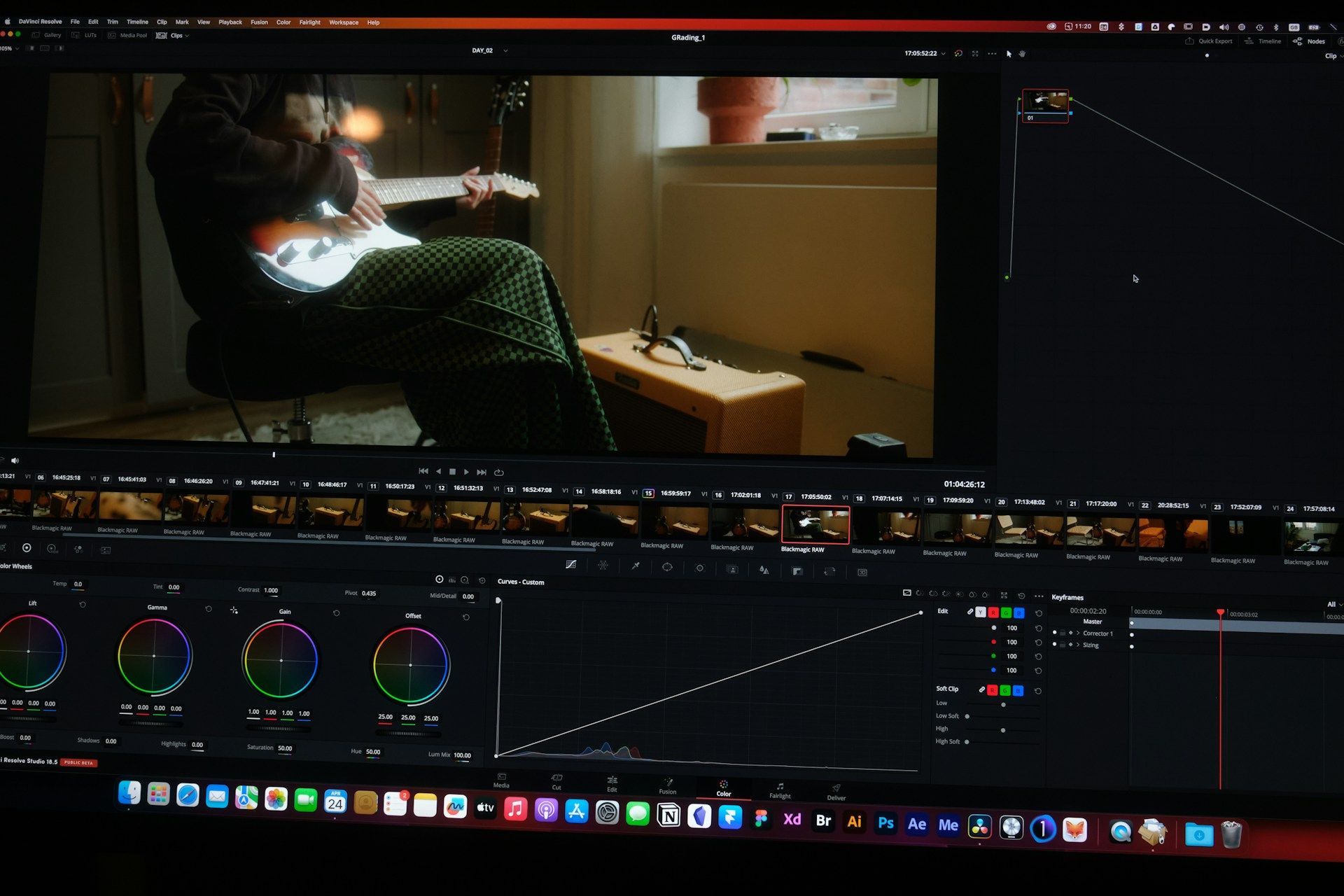Using Photography To Tell Better Marketing Stories
Telling a good story is what makes a brand stick. It’s what helps people feel something instead of just scrolling by. Whether it’s a local shop or a national brand, the way a business tells its story can set it apart. And while words matter, photos often carry more weight. They’re the first thing people notice, and they can create a feeling before someone reads a single sentence.
Photography adds depth to a story. It gives your audience something to hold onto, something real. A powerful visual can say more than a paragraph of copy ever could. When used right, photography doesn’t just decorate a message. It helps shape it. Marketing content supported by strong photos is easier to connect with, easier to remember, and more effective at moving people to act.
The Power Of Visual Storytelling
Visual storytelling is the art of using images to share ideas and messages. It's not just about aesthetics. It’s about connection. A well-captured photo can do the heavy lifting for your brand’s voice, making it easier for people to get what's being said without having to piece it together themselves.
People tend to respond emotionally to what they see. That connection makes photography a great way to build trust and trigger a certain feeling, whether it's excitement, comfort, curiosity, or happiness.
When a photo matches the story you're trying to tell, it increases the chance of the audience actually feeling that story. Think about an image of a family enjoying dinner at home. Without saying anything, it shows togetherness, warmth, and care. That one photo can paint the whole picture of what a product or service stands for.
Photographs can also guide focus. If you want viewers to pay attention to a specific detail, the right image will steer them there naturally. And when visuals are consistent across multiple platforms like email, your website, and social media, they help create a stronger brand presence. Done right, visual storytelling makes the message last longer in someone's mind and gives your marketing a longer life than just one post or ad.
Choosing The Right Images For Your Story
Picking the right photos can make or break your story. You don’t need fancy visuals, but you do need ones that fit. Every image should support the larger message you’re trying to share.
Here are some guidelines to help with image selection:
- Match the tone of your brand. Light and bright photos may work better for playful, casual brands, while rich, moody tones suit more formal or emotional messages.
- Avoid stock that feels staged. People can tell when a photo is trying too hard. Real or realistic images often connect better than anything overly posed.
- Keep your photos relevant. Each image should make sense in the context of your message or campaign. If it’s unrelated, it will likely distract.
- Show people using your product or service in real-life moments. This can help others picture themselves doing the same.
- Stick to a consistent look. Use similar lighting, filters, or framing throughout your visuals to keep your brand recognizable everywhere it appears.
Using the right photos helps you stay true to your message while building clarity and trust. When people see that your story aligns across words and visuals, it makes your message stronger and more believable. Each photo becomes part of the message, not filler.
Integrating Photography with Other Marketing Elements
Combining photos with other forms of content can boost your marketing message. Photos shouldn’t stand alone. They should work with text, videos, and audio to build a full experience. Text can lay out the facts or set the mood. Video brings things to life. Photos freeze those key moments that stick with people and are easy to share.
A strong way to use this is by combining photo collections with short videos. Let’s say a craft brewery puts together a slideshow of photos showing people brewing, laughing, enjoying fresh pours. That collection is paired with a video giving a peek behind the scenes. Together, they build a full picture of the people, process, and vibe of the brand.
Using photos across channels helps, too. Strong images paired with thoughtful captions on X, Instagram, or Facebook can spark interest and drive traffic. Keeping a similar tone and visual style across each platform helps people recognize your brand instantly.
Best Practices for Using Photography in Marketing
To get the most out of your photos, quality and thoughtfulness matter. Whether you're capturing photos yourself or working with a team, here are a few best practices to stick to:
1. Lighting and Composition: Good lighting makes all the difference. Natural light often works best. Try out angles to show the best version of the subject. The rule of thirds helps balance your shot and draw attention in the right places.
2. Resolution: Always use high-resolution photos. You want them to look sharp on websites, social media, and print, with no blurriness or pixelation.
3. Consistency: Use a consistent visual style. Whether it’s warm tones, clean lines, or moody lighting, keeping it uniform across platforms helps people recognize your brand.
4. Storytelling Support: Ask yourself what role the photo plays in supporting your message. If it doesn’t serve the bigger story, it might need to be replaced.
5. Legal Considerations: Always make sure you have the right to use a photo. Avoid images that are not approved for commercial use, and when hiring a photographer, spell out usage rights in writing.
Following these tips keeps your visuals working for you and not against you.
Crafting Compelling Narratives Through Photos
Great visual storytelling doesn’t happen by accident. It takes planning. To tell a solid story using photos, think in terms of a timeline. Identify where your story starts, what happens in the middle, and what wraps it up.
Start with key messages. What does your audience need to understand by the time they’ve seen your content? Once that’s clear, map out a photo sequence that reflects each step. Maybe it's the customer journey, a product being made, or highlights from an event. Every image should help the viewer follow the story along the way.
Use storyboards to lay it all out before producing anything. This helps keep series of images focused and structured.
For example, if you're a fitness coach, you could show your client’s first day, their training routine, progress milestones, and celebration after hitting a goal. This shows growth and builds inspiration through real results.
Stories made of photos create an emotional journey. Done right, a visual story invites your audience to see themselves in those moments.
Let Strong Visuals Carry Your Brand Message
Photos are powerful on their own, but when they work well with your brand’s message and content, they can do even more. Great visuals make people slow down, take notice, and remember what they’ve seen.
Whether it’s a single impactful photo or a series of carefully planned images, photography helps bring your story into focus. It shows, not just tells, what your brand is all about.
Choosing the right image takes practice and care. When you match emotion with intention and stay consistent in style, the moments you capture do more than look nice. They work hard for your brand every time they’re seen.
Ready to elevate your brand’s story through stunning visuals? Trust Oddball Creative to guide your narrative with unmatched expertise in professional photography and video production. As a renowned video production service, we bring together captivating visuals and compelling storytelling to make your brand unforgettable. Let our team help you shine across all platforms!



